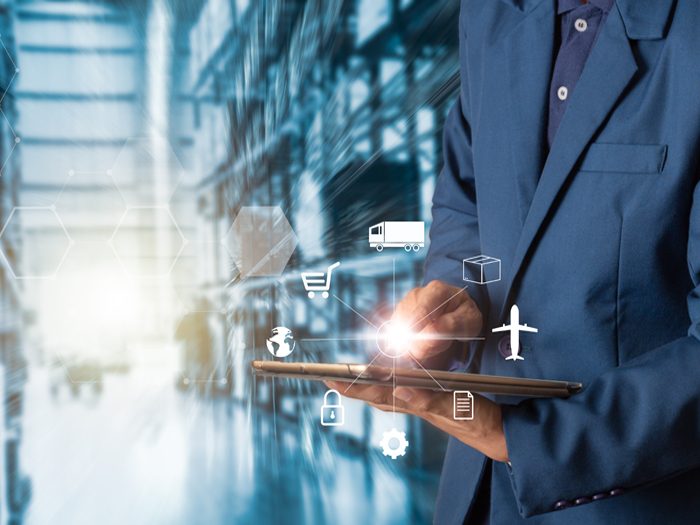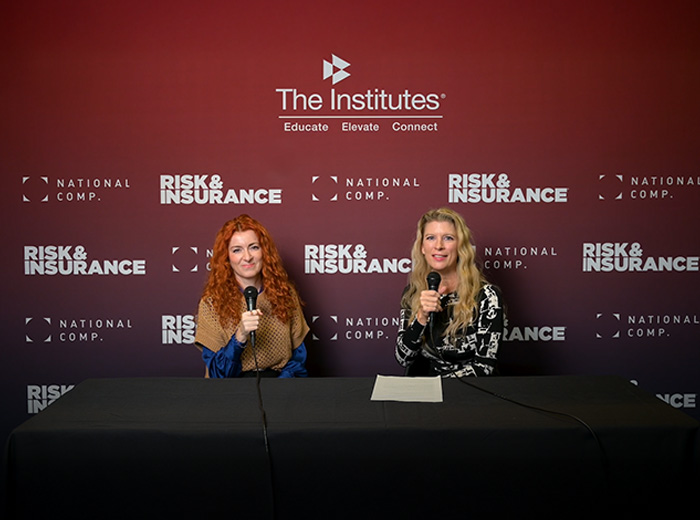Blockchain Technology Will Drive Powerful Gains in Supply Chain Management

The first illnesses started appearing in March 2018. A handful of people across the country checked themselves in to hospitals, sick from E. coli bacteria. At least 210 people in 36 states fell ill and five died.
Investigators quickly identified romaine lettuce as the source of the outbreak but couldn’t pinpoint the cause for months. In a second romaine-related E. coli outbreak later in the year, 62 people were infected from 16 states and the district of Columbia, and 25 people were hospitalized.
Sadly, the severity of these outbreaks could’ve been mitigated. New tools including blockchain can make supply chains safer and more manageable, for global food and beverage supply chains as well as a broad range of other industries.
Blockchain — or distributed ledger technology (DLT) — is used to facilitate the movement of goods, information, and finances, and automate supply chain functions. It creates secure and immutable digital records, a valuable tool for enhancing supply chain traceability and transparency.
In the food and beverage industry, liability risk is high. Annually, 48 million Americans become sick every year from contaminated foods, 128,000 are hospitalized and 3,000 die. Foodborne illness results in $3 billion in health-related costs.
Direct losses to business can be more complicated to quantify. The actual amount of food compromised might be small. But the clock is ticking. The longer it takes to identify the source of the problem, the more product that is likely to go to waste due to an overabundance of caution.
To minimize the risk of liability, products may be taken off the shelves for days or weeks or even months until the risk has passed.
Panic around food recalls often leads to a longer-term mistrust and avoidance of the product, as was the case with public sentiment surrounding romaine lettuce all the way into 2019, after the risk of contamination had passed.
As consumers, restaurants and supermarkets avoided romaine, growers and distributors were forced to allow countless pounds of product to go to waste.
Using DLT, however, time to discovery and amount of waste can both be minimized.

John R Williams, vice president, crisis management, Swiss Re Corporate Solutions
Blockchain technology offers clear consensus. Everyone within a network can view the information contained in the ledger but cannot change or erase past entries.
No stakeholder can change the record to avoid liability.
In the event of a recall, information gathered from individuals initially sickened can be compared against blockchain data, allowing a clear view into the supply chain, creating visibility from a restaurant where contaminated food was purchased straight back to the grower or growers involved.
John R. Williams, vice president, crisis management at Swiss Re Corporate Solutions, explains the value of blockchain technology using a hypothetical FDA recall of a pizza ingredient. The pizza manufacturer strives to minimize losses quickly while protecting the public and restoring public confidence.
“Due to the fact that everything in blockchain is public, yet confidential, the pizza manufacturer can ask the blockchain a specific question without having to go through the records of all the intermediate suppliers.
“The food manufacturer can go in and say, ‘Where did the avocado for lot 453 come from?’ and they can get the answer all the way to the beginning of the supply chain, without having to compromise the integrity or the confidentiality of all the suppliers that are in between. Because remember, where you’re getting your ingredients from, that’s valuable intellectual property. You don’t want to share it with everyone.
“So if you can answer that question quickly with absolute certainty, that’s going to help a lot.”
Food and beverage recalls could be performed faster, with far greater precision, and with enhanced safety for consumers. Restaurants and supermarkets would be able to verify their own supply chains and confirm with confidence that their inventory is safe.
A New Standard
In April 2019, the FDA issued a new draft guidance on voluntary product recalls, which included specific references to new technologies, including blockchain.
According to the FDA, “thorough and organized record-keeping is especially important” in its efforts to “improve recalls through product traceability by tapping into modern approaches such as Blockchain technology.”
Large companies such as DHL are adapting the use of blockchain technology to maximize their supply chain transparency.
In September 2018, Walmart announced that all of its suppliers of leafy greens would be required to use blockchain technology so that those products could be traced to their source.
As more companies adopt the technology, the use of blockchain within logistics functions is expected become the new industry standard.
According to a market research report published in Dec. 2018, blockchain technology is predicted to grow to a $7.68 billion industry by 2022.
“[Manufacturers] can get the answer all the way to the beginning of the supply chain, without having to compromise the integrity or the confidentiality of all the suppliers that are in between. Because remember, where you’re getting your ingredients from, that’s valuable intellectual property.” — John R. Williams, vice president, crisis management at Swiss Re Corporate Solutions
In addition, when sensors, scanners, and other connected IoT devices are linked to the blockchain, valuable information can be gleaned.
For example, 5G chips can be embedded into tubs, corks, pouches etc., giving each package its own personal ID card and allowing parties to track each step in the supply and transaction chain.
Williams said that blockchain technology is still maturing.
“All of the parts of the block chain ecosystem, which is going to be needed to provide value and proper use cases, that’s not there yet,” he said, likening it to the connection between smartphone technology and the rise of Uber and Lyft.
“Cellphones are great,” he said, “but it was only when people really started to have GPS in their pockets everywhere — and that GPS reached a high enough level of accuracy — where use cases like Uber could finally come to fruition.”
Risk managers have an opportunity to get ahead of the curve now, to deepen their understanding of how blockchain technology can be applied to their supply chain processes and the potential benefits to the organization.
But that doesn’t necessarily mean it’s necessary to recruit a blockchain expert to the team, said Williams.
“Take an audit of skill and interest within the team before hiring someone from the outside that has only blockchain experience,” he said.
“[If you] engage someone who has familiarity with your business model and then skill them up with basic information on the possibilities of a technology like blockchain, it’s probably much cheaper and a much more efficient way to start an organization off using the technology.”
“You’re making people comfortable with it first. Then you can get them to start asking, ‘How about? what if?’ and start to connect those dots. … But getting a highly paid expert that’s got no knowledge of your specific application of interest is perhaps where companies can fall short.” &










